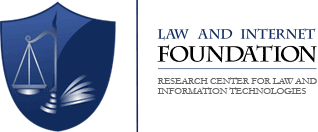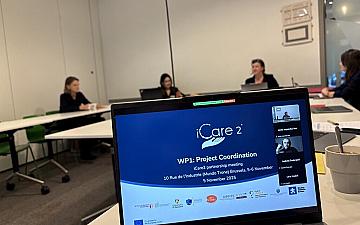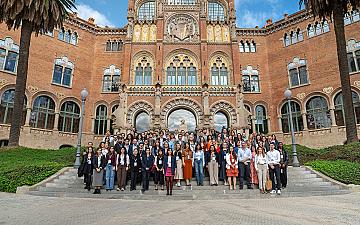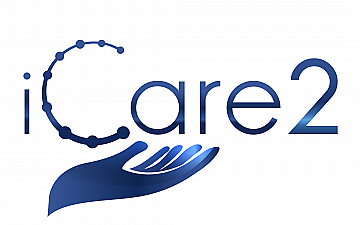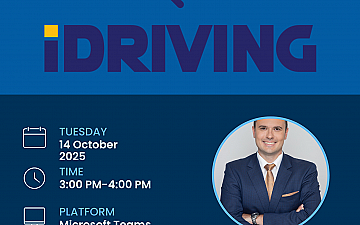In this blog post, parents, teachers, and communities will learn how to recognise the early signs of grooming and online exploitation, and how to protect children from online trafficking. They will gain practical strategies for intervention, learn how to encourage open communication, and understand the importance of digital literacy in keeping children safe from online traffickers.
Recognising the Signs of Trafficked Children
Recognising the signs of potential online trafficking is crucial for early intervention and preventing further harm. The experiences of online trafficked children can manifest in different ways, as traffickers use digital platforms to manipulate and groom their victims. These interactions often leave subtle clues in a child's behaviour, both online and offline, that can indicate potential exploitation. In the following section, we will explore key signs to watch for, helping parents, teachers, and communities identify and address online trafficking before it escalates.
Online Indicators
When children are trafficked online, their experiences often begin with subtle online behaviours that can be early indicators of exploitation. Children who are being groomed or exploited online may spend an unusually long time on the internet, often isolated from family or friends. They may become preoccupied with online conversations or platforms where they interact with traffickers. If a child suddenly becomes secretive about their online activities, refuses to share information about who they are talking to, or hides their screen when someone enters the room, this could be a warning sign. In some cases, they may delete messages or block monitoring tools to conceal their activities.
Emotional distancing is also common, with the child becoming irritable, moody, or defensive when asked about their online activities. This defensiveness often reflects a desire to protect the secrecy of their digital relationships, especially if they involve a trafficker. Additionally, anxiety or agitation when unable to access their devices or check messages is a clear warning sign. Traffickers often create a sense of dependency, and children may become visibly upset or restless when they are disconnected from their online world. They might show fear of missing important messages or feel frustrated if they cannot immediately reply to their trafficker. Children may also engage in inappropriate conversations or be asked to share explicit content, leading them to feel ashamed or avoid discussing these topics with others.
An obsessive attachment to their phone or computer can also develop, with the child spending hours online, prioritising online interactions over real world activities and relationships. This attachment may cause them to use their device in secret, stay up late or go to isolated places to continue online conversations. These behaviours can lead to neglect of schoolwork, social activities, and family time, and can point to an unhealthy emotional and psychological dependence on their digital interactions.
Offline Indicators
When children are trafficked online, the effects of exploitation can also manifest through offline behaviours that may be harder to detect but are equally important. One of the first signs may be a sudden and unexplained change in behaviour. Children who are being trafficked online might become withdrawn, anxious, or depressed, displaying mood swings or showing a lack of interest in activities they once enjoyed. They may also seem fearful or unusually cautious when it comes to revealing their whereabouts or activities, avoiding questions about where they have been or whom they have been with.
Another concerning sign is the presence of unexplained gifts or money. Children who are being trafficked online might receive items such as clothing, jewellery, or digital devices from strangers or individuals they have met online. They may be reluctant or unable to explain where these gifts came from, or they may try to hide them. Similarly, if a child begins to have extra money without a clear source, it could be a sign that someone is giving them money in exchange for meeting in person or for providing some form of online sexual services.
A trafficked child may also begin to withdraw from family and friends, isolating themselves from their regular social circles. They may stop spending time with people they were once close to or avoid family gatherings. Traffickers often manipulate children to sever ties with their support networks, making the child more dependent on the trafficker.
Physical signs of abuse or neglect may also appear. Although online trafficking might not always result in immediate physical harm, trafficked children may exhibit signs of neglect, such as poor hygiene, weight loss, or an overall lack of self-care. They might seem tired or disengaged, possibly due to long hours spent online or stress from their interactions.
Additionally, child victims of sexual exploitation may display a sudden, inappropriate sexualised behaviour or language that is beyond their years. This could include an unusual understanding of sex, even an obsession with it, which is often the result of repeated exploitation. These behaviours can sometimes be mistaken for normal curiosity or adolescent behaviour, but they may be a sign that a child is being exposed to sexual abuse. Such changes in behaviour, especially when exhibited suddenly or consistently, should not be overlooked.
Preventing Child Trafficking: Measures and Approaches
Preventing child trafficking requires a multi-faceted approach that addresses the root causes of trafficking, raises awareness, and implements protective measures. These measures range from digital literacy education to utilising parental controls and encouraging open communication between children and trusted adults.
One of the most important steps in preventing online trafficking is teaching children digital literacy. Schools should incorporate lessons on online safety into their curricula, helping children understand the risks they face on social media, gaming platforms, and chat rooms. Children need to be educated about how traffickers use these platforms to groom victims. Key lessons should include recognising grooming behaviours, such as trying to build emotional connections quickly, offering gifts, or suggesting secretive communications, while also teaching them how to protect their privacy by only accepting friend requests from people they know and by adjusting their security settings. Parents can reinforce these lessons at home, regularly talking to children about their online experiences, and ensuring that they understand how to spot potential threats.
Another very effective method for preventing online trafficking is open communication between children and trusted adults in a child-friendly and age-appropriate way. It's essential to create an environment where children feel comfortable discussing their online experiences, especially when something feels wrong or uncomfortable. This means being actively involved in their online world - not just talking about the dangers but also engaging in meaningful discussions about the risks. Parents and teachers should explain how traffickers may pose as friendly, trustworthy individuals to manipulate and groom children and inform them about tactics they use to gain their trust. It's also important to remind children not to share personal details such as their hobbies, family life, or school activities with strangers, as these can be used by traffickers to manipulate them. Educating children about the dangers of oversharing online is vital. One of the strongest strategies is to provide personal examples on how to behave online, what to share and what not to share.
To further protect children, parents can provide a checklist of rules to follow while using social networking sites. These guidelines can help children navigate online spaces more safely. Some basic rules include: never posting your full name or date of birth, never sharing contact information such as phone numbers, emails, or addresses, and being cautious about the photos they post. Children should also be taught that no online communication is entirely private, and they should avoid sharing information about their school, work, or where they plan to be. While this list is not exhaustive, it provides a strong foundation for children to understand what is and isn’t appropriate to share online, helping to protect them from online traffickers.
The use of parental control software is an essential tool in preventing online exploitation. These tools can help parents monitor social media activity, limit access to inappropriate content, and block communication with potentially dangerous individuals. There are platforms that parents can use which alert them when their children are engaging in risky online behaviour. Teaching children to use safe search engines and browse responsibly further reduces the risk of exposure to harmful content or potential interaction with traffickers.
In addition to these protective tools, it is vital for communities to promote awareness about the risks of online trafficking. Governments, schools, and community organisations can organize workshops or seminars that educate parents, teachers, and children about the dangers of online grooming and trafficking. These sessions can teach community members how to recognise warning signs of exploitation and offer practical advice on how to protect children.
Protecting children from online trafficking requires proactive efforts, education, and open communication between children, parents, and communities. By recognising the early signs of exploitation, promoting digital literacy, and utilising protective tools, adults can help safeguard children from the dangers of online trafficking. Through these efforts, safer online environments can be created, and children can be taught to navigate the digital world responsibly, ensuring they are protected from the threats of trafficking and exploitation.
The drafting of this blog post is funded by the European Union. Views and opinions expressed are however those of the author(s) only and do not necessarily reflect those of the European Union or the European Commission. Neither the European Union nor the granting authority can be held responsible for them.
Use of mobile phone in trendy neon lights. Creative vivid color of ultraviolet red and blue. Hands of Teen Girl scrolling up photos Close-up at dark neon room. App for sale in shop. Social media.
© Shutterstock